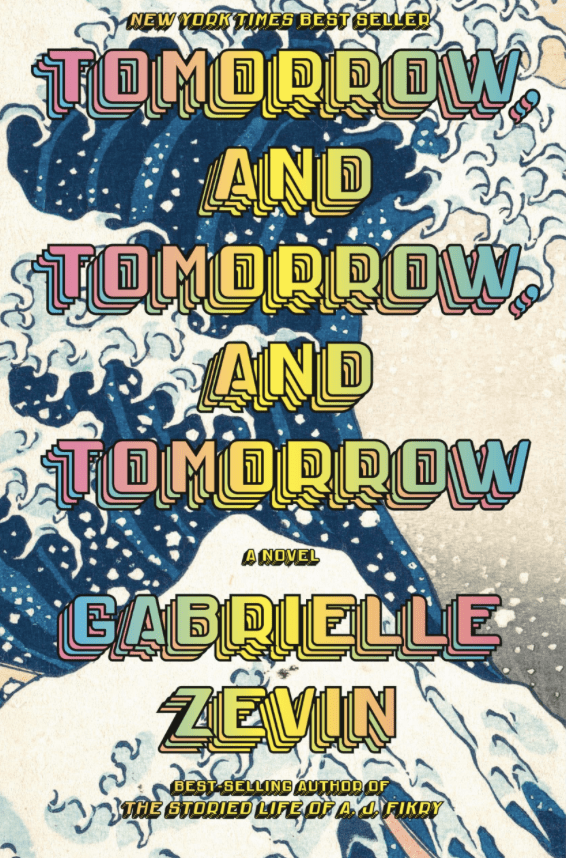Tomorrow, and Tomorrow, and Tomorrow
When I fly out of Utah to visit my family, I choose a book from an airport shop to read on my flight. The options are usually limited, so I read something I wouldn’t have otherwise.
That’s how I picked up “Tomorrow, and Tomorrow, and Tomorrow” by Gabrielle Zevin, which I had heard was good but knew nothing about.
Halfway through the first chapter, I worried I’d just wasted $20 on a book I wouldn’t enjoy. Video games are a central part of this novel, and the only two I had ever finished were the “Sonic Adventure” games 16 years ago.
But I was on a three-hour flight and wasn’t going anywhere, so I persisted. And with each chapter, I was more hooked.
Although I’m definitely not a gamer, I do enjoy watching the occasional Let’sPlay on YouTube, and what I’ve grown to appreciate about games is that many are just stories the player gets to become an integral part of.
Stories and people are my passion, and so that’s ultimately what drew me in. This novel is a love letter to the human condition and storytelling in all its forms, not only as a source of entertainment but as a way to make sense of life’s complexities.
“Tomorrow, and Tomorrow, and Tomorrow” focuses on the lives of Sadie Green and Sam Masur, childhood friends who reconnect in adulthood. Their chance reunion at a subway station in Cambridge, Massachusetts, sparks their previously dormant friendship. Together, they create a company and develop a series of groundbreaking video games that push the boundaries of the medium.
Zevin captures the highs and lows of collaboration, portraying the joy of shared creativity alongside the inevitable tensions that arise when two strong-willed individuals work together. The interactions and conflicts feel real and raw.
However, these conflicts between Sam and Sadie in the novel started to feel repetitive about halfway through. Most of their issues were the result of lacking communication, which is my least favorite plot device of all time.
One of the novel’s most compelling aspects is its exploration of art’s role in shaping identity and relationships. Through the games Sadie and Sam design, Zevin delves into questions of agency, escapism and the interplay between creator and audience. Their first major success “Ichigo” is a game that combines the nostalgic charm of retro gaming with innovative storytelling. This blend of old and new mirrors the novel’s own structure, which draws from classic literary themes while embracing the modern sensibilities of its protagonists.
Zevin’s prose is lyrical, but not so much so that it’s inaccessible. Complex ideas feel intimate and personal, and her characters are deeply human. Sam’s physical and emotional traumas are handled with sensitivity, as is Sadie’s struggle with depression and her efforts to make it in a male-dominated industry.
While the novel’s primary focus is on Sadie and Sam, the supporting characters are equally memorable. Marx Watanabe, Sam’s college roommate and later Ichigo Studios’s producer, brings warmth and stability to the narrative. His presence serves as a counterbalance to the often fraught dynamic between Sadie and Sam. Marx’s unwavering support and quiet wisdom highlight the importance of chosen family, a theme that resonates throughout the book.
Another strength of “Tomorrow, and Tomorrow, and Tomorrow” is its treatment of time and legacy. The title, borrowed from Shakespeare’s “Macbeth”, underscores the inevitability of change, the desire to leave a mark on the world and the beauty of trying again.
Zevin weaves these ideas into the story through the characters’ creative endeavors and their reflections on mortality. The games they design become a metaphor for life — finite, but filled with infinite possibilities.
Although I really enjoyed my read, the pacing can be uneven. The novel shifts from focusing on collaborative processes to individual struggles, has an occasional second-person chapter and drops readers into a video game world. While I loved these sections for their artistic value, it made the experience occasionally feel disjointed.
This book also earns itself a trigger warning — the big turning point of the novel is emotionally traumatic and involves gun violence. The chapters were some of the most beautiful writing I have read in a long time, but I wasn’t prepared for how sad it was, and it made me cry for a full hour afterwards. I would encourage those who may be sensitive to that type of content to be cautious.
For students like myself, Zevin’s novel offers both inspiration and a challenge. It prompts readers to consider how their own passions can be harnessed to create something meaningful and enduring and reminds us that behind every achievement are the relationships that shape and sustain us.
“Tomorrow, and Tomorrow, and Tomorrow” is a novel that lingers long after the final page. It is a testament to the power of storytelling and the resilience of the human spirit. Whether you’re a gamer, an artist or simply someone who appreciates a well-told tale, this book will resonate in ways that feel both deeply personal and profoundly universal. For those looking to end their year with a read that challenges the mind and stirs the heart, Gabrielle Zevin’s latest work is an excellent choice.

